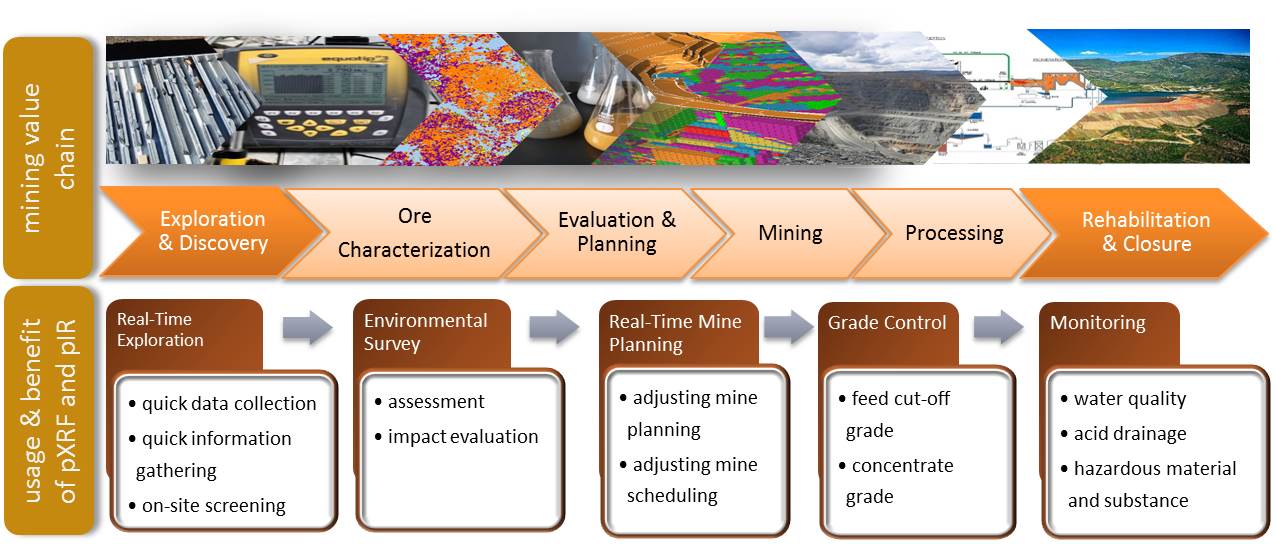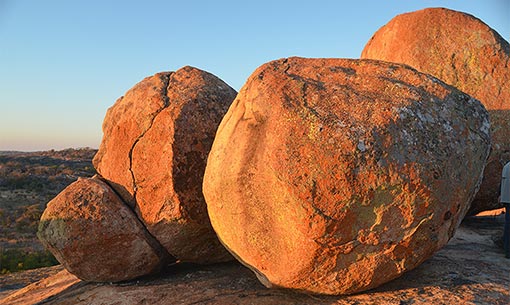Overview
Recent advances in field portable analytical instruments have revolutionized data acquisition in the Mining Value Chain. The LoCoSu project will explore the potential for the use of field portable x-ray fluorescence (pXRF) and infrared (pIR) instruments in fast, real-time, cost effective surveys for characterization of critical high-technology metal resources in Subsaharan Africa (i.e. Namibia), where access to fully equipped geochemical and mineralogical labs is not usually a viable option.
 Our team of German, Namibian, and Zambian scientists will use state-of-the-art field portable instruments under quasi-realistic conditions to investigate sites where known enrichments of critical raw materials occur. The wider application of low-cost portable field instruments is not only essential for resource evaluation, but also particularly important for environmental monitoring in Subsaharan African countries with restricted access to financial support.
Our team of German, Namibian, and Zambian scientists will use state-of-the-art field portable instruments under quasi-realistic conditions to investigate sites where known enrichments of critical raw materials occur. The wider application of low-cost portable field instruments is not only essential for resource evaluation, but also particularly important for environmental monitoring in Subsaharan African countries with restricted access to financial support.
The objectives of the LoCoSu project are:
- Optimization of portable pXRF methods to qualitatively and quantitatively identify high-technology metal ores
- Recommend standard operating procedures and analytical protocols for pXRF analysis of high-technology elements
- Collaborate with and train the next generation of earth scientists and mine-site professionals

 Our team will develop and improve analytical protocols for pXRF and pIR spectrometry of critical raw materials. The elaborated methodology will then be applied to selected case studies and tested under realistic on-site conditions. The selected case studies include: (1) REE-bearing mineral sands, Erongo region; (2) REE-rich Cu-Mine, Swartmodder; (3) Sn-W veins, Brandberg West Mine; (4) In-Ga-Ge mineralization of slags, Tsumeb.
Our team will develop and improve analytical protocols for pXRF and pIR spectrometry of critical raw materials. The elaborated methodology will then be applied to selected case studies and tested under realistic on-site conditions. The selected case studies include: (1) REE-bearing mineral sands, Erongo region; (2) REE-rich Cu-Mine, Swartmodder; (3) Sn-W veins, Brandberg West Mine; (4) In-Ga-Ge mineralization of slags, Tsumeb.
Educating and teaching the next generation of earth science and mining engineering professionals new skills, which are essential for a future sustainable mine development in Subsaharan Africa, is an integral aim of the LoCoSu project. Developing the capacity to conduct low-cost surveys using high-technology instruments in the field will be achieved via workshops and short courses.




